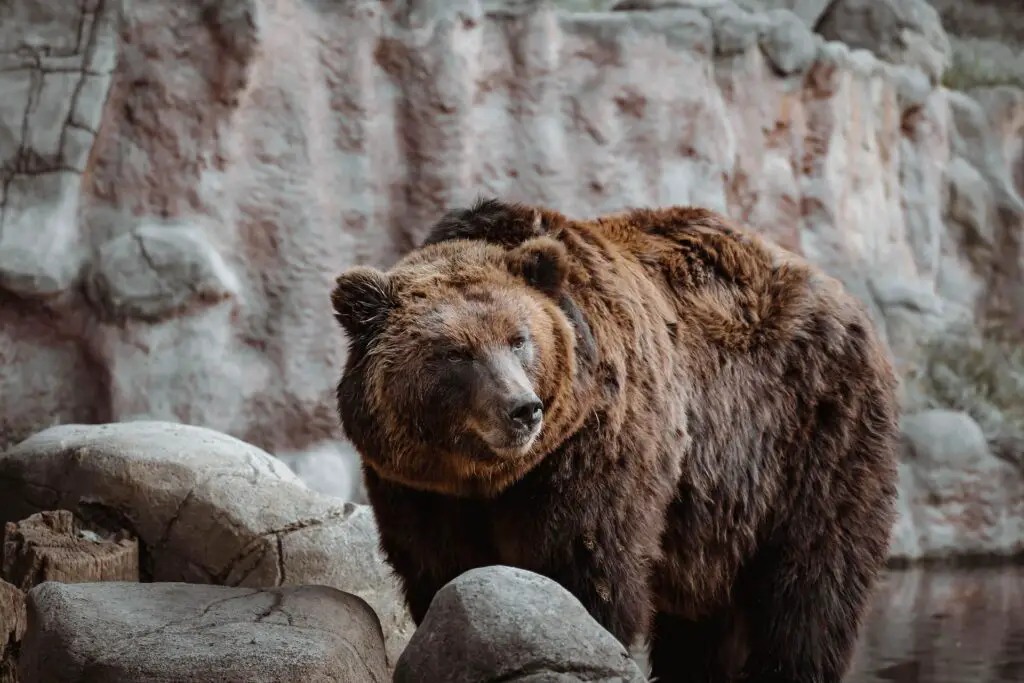An Introduction to the Kodiak Bear
The Kodiak Bear, scientifically known as Ursus arctos middendorffi, is a remarkable subspecies of the brown bear native to the Kodiak Archipelago in Alaska.
These majestic creatures are some of the largest bears in the world, second only to the polar bear in terms of overall size.
In this exploration of the Kodiak bear, you will uncover their unique characteristics, habitat, diet, and much more.
Physical Characteristics of Kodiak Bears
Kodiak bears exhibit impressive physical features that distinguish them from other bears.
Their size immediately grabs attention.
Males, or boars, can stand over 10 feet tall when on their hind legs and weigh as much as 1,500 pounds.
Females, or sows, are slightly smaller, usually weighing in between 500 to 700 pounds.
Their fur varies from blonde to orange, and even to shades of dark brown, providing them with excellent camouflage in their forested environments.
The Kodiak Bear’s Habitat
The unique habitat of Kodiak bears is limited exclusively to the islands of the Kodiak Archipelago.
This area boasts a rich ecosystem with dense forests, alpine meadows, and an abundance of rivers and streams.
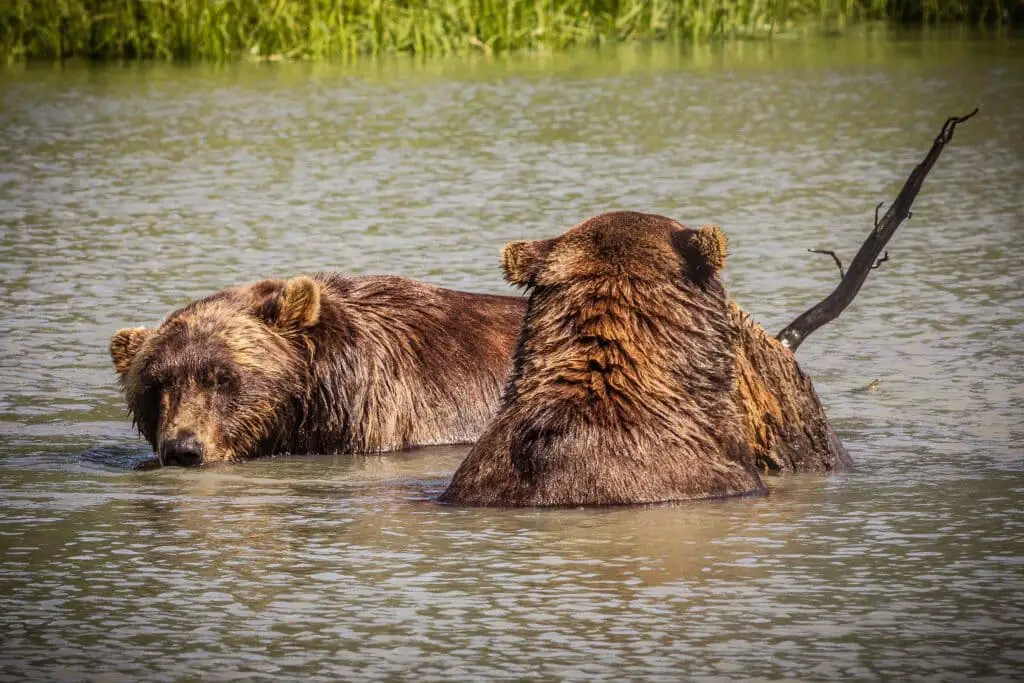
The climate on Kodiak Island, where when it rains, can be a bear’s haven for both shelter and food sources.
Diet of the Kodiak Bear
Being omnivores, Kodiak bears have a diverse diet.
In spring, they feed heavily on the fresh shoots of sedge grasses, and as summer approaches, they shift their diet to salmon, berries, and other available fruits.
In autumn, high-calorie foods like salmon become a crucial part of their diet to build fat reserves for winter hibernation.
The Kodiak Bear and Salmon
Kodiak bears are expert fishers.
They use their sheer strength and sharp claws to catch salmon during the annual spawning runs, a skill crucial for their survival.
Observing a Kodiak bear fishing is a breathtaking sight that underscores their power and instinctive hunting abilities.
Reproduction and Lifecycle of Kodiak Bears
Kodiak bears are solitary animals, coming together only during mating season which takes place from May through early July.
After mating, pregnant sows will prepare a den for winter hibernation where they will give birth to cubs, often twins, in January or February.
The cubs, which are born blind and hairless, stay with their mother for up to three years before setting out on their own.
Conservation Efforts for the Kodiak Bear
Conservation is key to ensuring that the Kodiak bear continues to thrive.
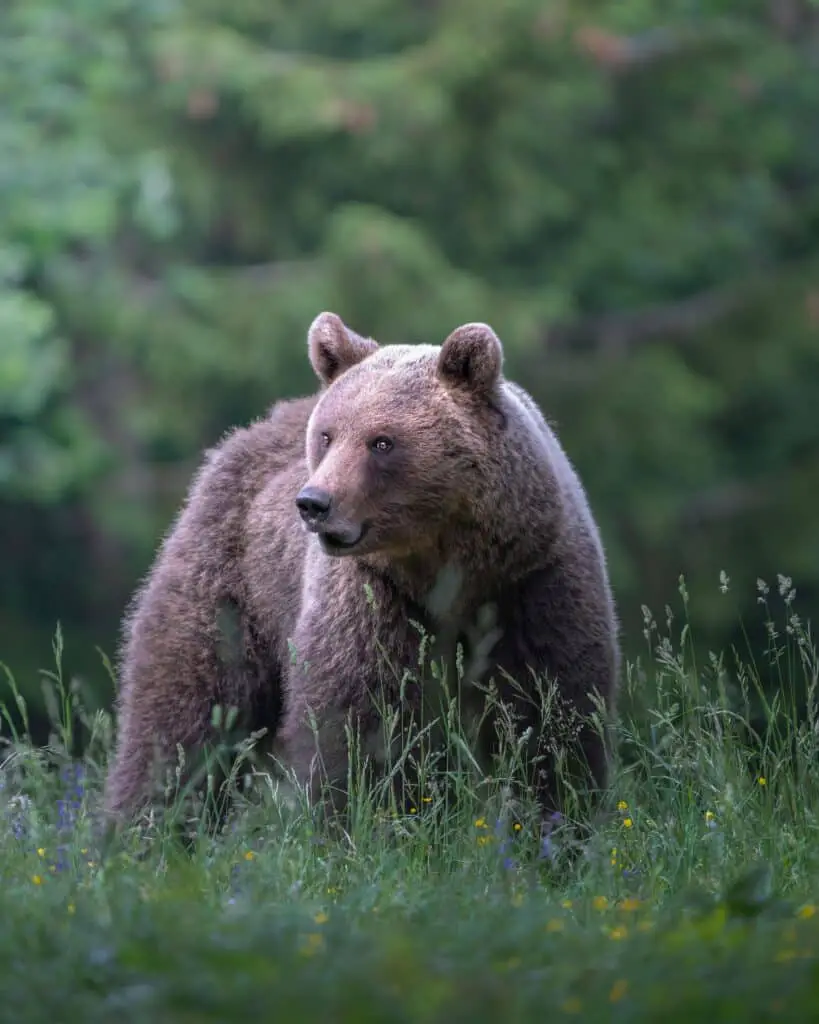
Fortunately, due to strict hunting regulations and the remoteness of their habitat, these bears are not currently endangered.
However, ongoing efforts to monitor their populations and habitat are essential to maintain this status.
Human Interactions with Kodiak Bears
On Kodiak Island, bears and humans have coexisted for centuries.
While they generally avoid human contact, encounters can happen, mandating the need for locals and visitors to be bear-aware and exercise caution in bear country.
Kodiak bears are a vital part of the local culture and economy, contributing to the eco-tourism industry on the island.
Behavioral Traits of the Kodiak Bear
As intelligent and curious animals, Kodiak bears display a wide variety of behaviors.
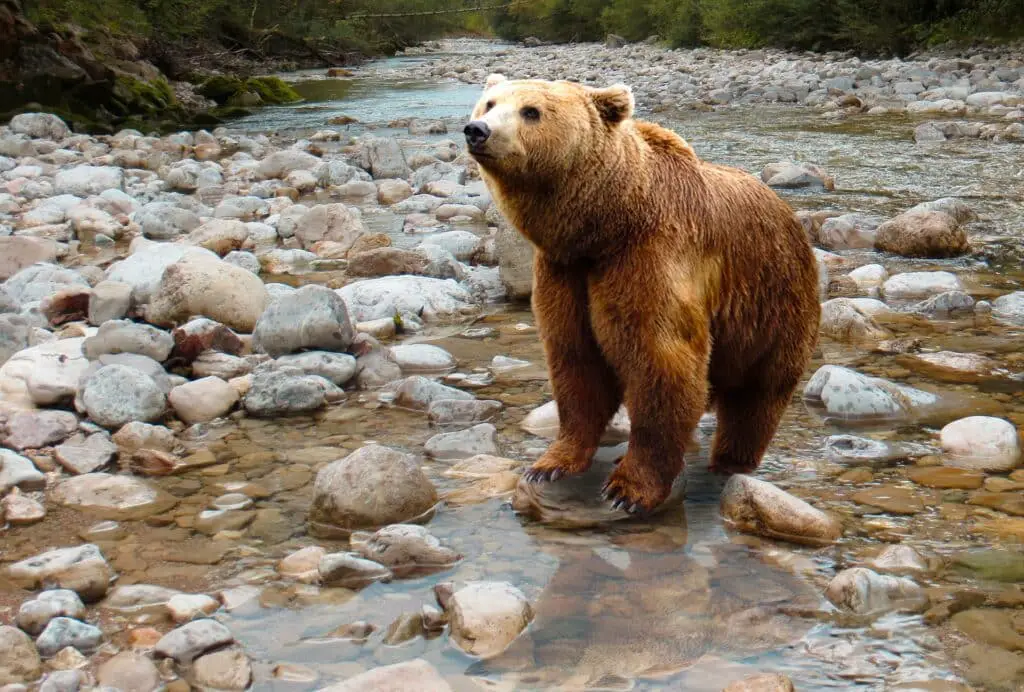
They are skilled problem-solvers, which can sometimes lead them close to human habitats in search of food.
Typically, their natural shyness keeps them safe from human disturbances.
FAQs: The Kodiak Bear’s Behaviors, Diet, and Habitat
What do Kodiak bears eat to sustain their massive size?
They have a versatile diet comprising of plants, berries, salmon, and other small to mid-sized mammals.
Are the Kodiak bears endangered or threatened?
No, they are not currently endangered, but they are protected by law to ensure their population remains stable.
How do Kodiak bears interact with their environment?
They play an essential role in their ecosystem by regulating prey species, dispersing seeds, and helping to maintain healthy forest and river environments.
What measures are taken to protect bear habitat on Kodiak Island?
There are strict regulations on land use, hunting, and waste management to ensure the bears and their habitat remain undisturbed.
Do Kodiak bears hibernate?
Yes, they hibernate during the winter months, which is a critical part of their survival strategy.
Kodiak Bears: A King of the Alaskan Wilderness
Kodiak bears reign supreme in their island domain, depicted as symbols of wilderness and strength.
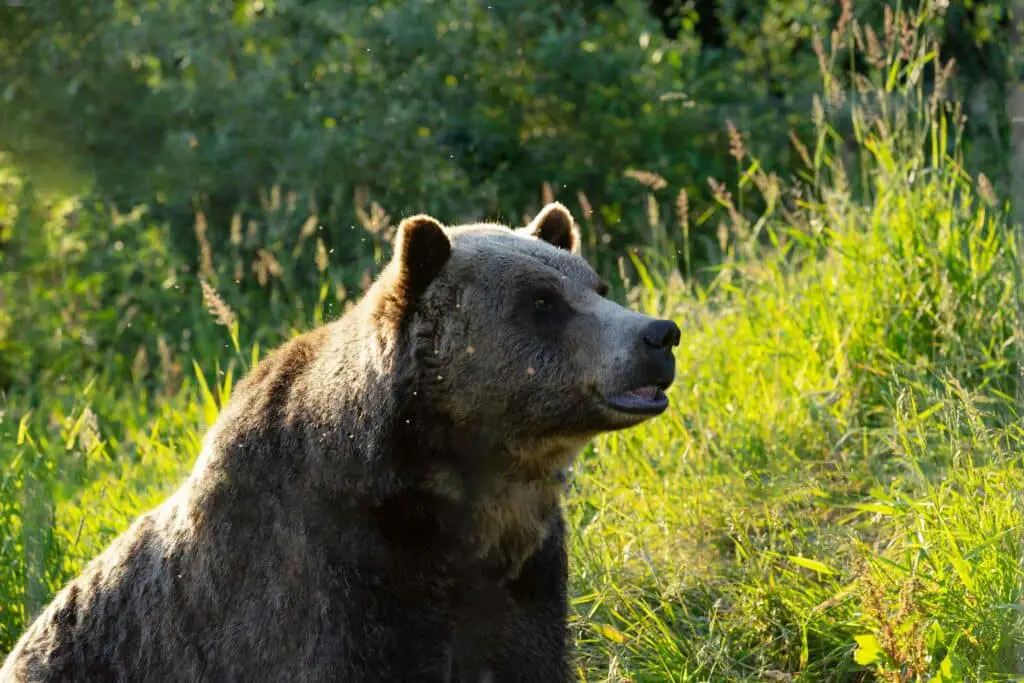
Their existence is a testament to successful conservation practices and the importance of balanced ecosystems.
Understanding and respecting these great bears is essential for ensuring that they continue to thrive for generations to come.
Exploring the Kodiak Bear’s Role in Alaskan Ecology
As apex predators, Kodiak bears influence their environment in multiple ways, from controlling prey populations to facilitating nutrient distribution in forests and rivers.
Their continued health is a good indicator of the overall state of the Kodiak Archipelago’s ecosystem.
Furthermore, these bears contribute to the local culture and the food plots of the indigenous communities that hunt them for subsistence under regulated laws.
Kodiak Bears and Climate Change
Climate change poses a new set of challenges for Kodiak bears.
Their habitat and food sources are at risk due to rising temperatures and changing weather patterns.
It is more important than ever to understand how these changes can affect the delicate balance of life on Kodiak Island.
The Impact of Tourism on Kodiak Bears
While tourism plays a significant role in Kodiak’s economy, it’s crucial to manage it in ways that do not disrupt the natural behaviors and habitat of the Kodiak bear.
Ongoing research and cooperation between conservationists, tourists, and locals can help maintain a safe environment for both bears and humans.
Kodiak Bear: An Emblem of Wild Beauty and Power
The Kodiak bear stands as a majestic representative of the untamed beauty of the Alaskan wilderness.
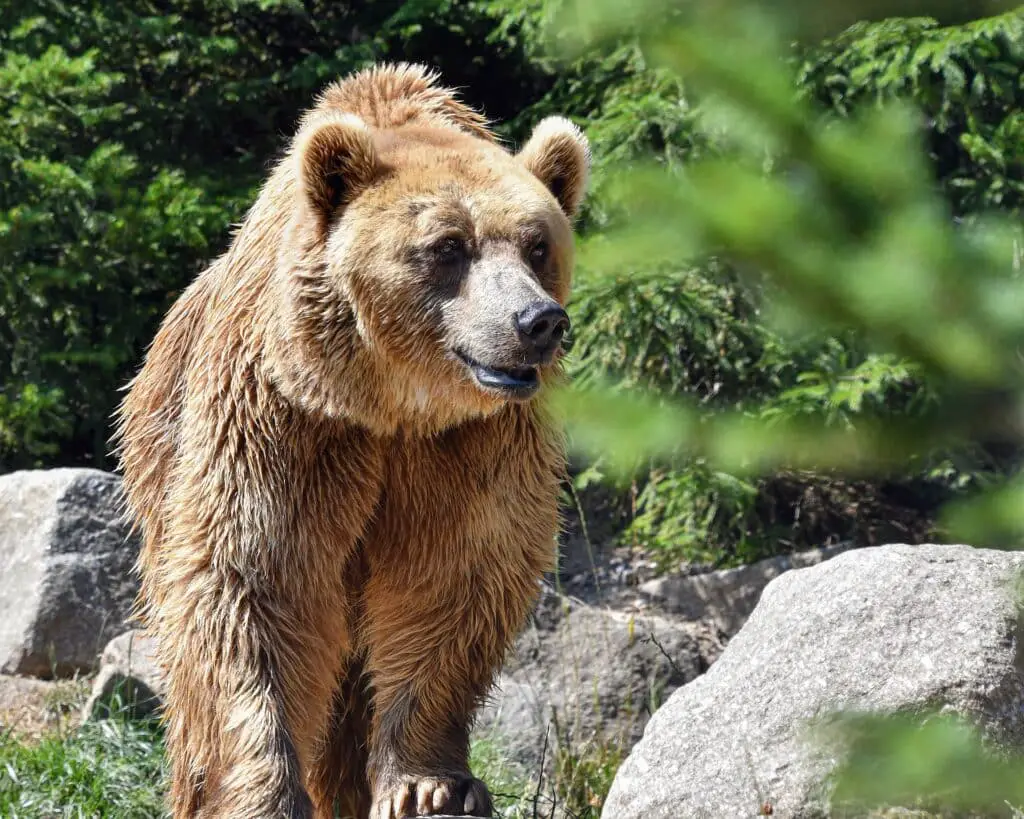
It is a creature that commands respect and admiration, embodying the raw power and the delicate balance of nature.
Now that we’ve dived deep into the world of these magnificent bears, it’s clear that their continued existence is not only crucial for ecological balance but also for the cultural heritage of Kodiak Island and Alaska as a whole.
Kodiak Bears Interaction with Other Species
Kodiak bears, due to their position at the top of the food chain, play a pivotal role in influencing the populations of other species in their habitat.
When it comes to interaction with other wildlife, they can impact prey species numbers and behaviors.
For instance, their predation on deer and elk can influence where these prey animals forage and how they move about the landscape.
Unique Adaptations of Kodiak Bears
Kodiak bears have evolved to live in the rugged and remote landscapes.
They have developed large, curved claws ideal for digging and catching fish, and they possess an excellent sense of smell to locate food over great distances.
These adaptations have allowed them to become proficient survivors, able to sustain themselves through lean times.
Challenges Kodiak Bears Face
Despite their current stable status, Kodiak bears face several challenges.
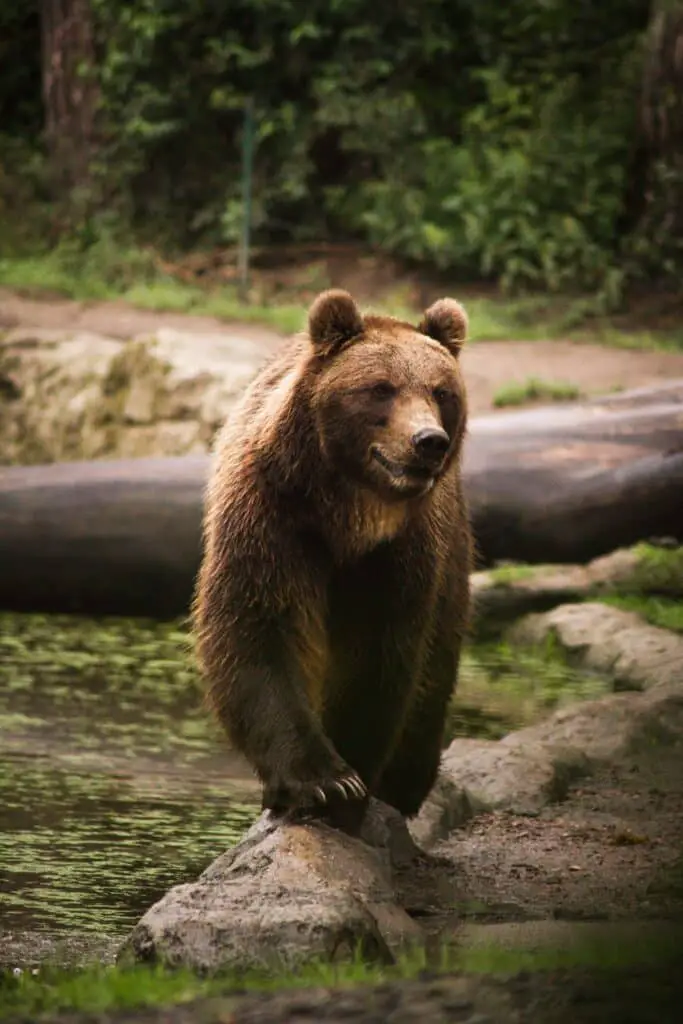
Climate change is altering their environment, potentially impacting the availability and distribution of food sources like salmon and berries.
Additionally, increasing human presence and development can lead to habitat fragmentation and heightened risks of human-bear conflicts.
The Presence of Brown Bears on Kodiak Archipelago
Genetic studies indicate that brown bears on the Kodiak Archipelago have been isolated from other bear populations for about 12,000 years.
This separation has led to some distinct differences between Kodiak bears and other brown bear populations in size, genetics, and behaviors.
Non-Profit Organizations Supporting Kodiak Bear Conservation
There are various non-profit organizations dedicated to the preservation of Kodiak bears.
These groups often work with local governments, scientists, and the community to fund research projects, habitat restoration, and educational programs that promote conservation.
The Relationship Between Kodiak Bears and Local Communities
The relationship between Kodiak bears and the local communities is complex and intertwined.
For many residents, the bears are a source of livelihood through guided hunts and wildlife viewing opportunities.
However, living in proximity to such powerful animals demands a deep understanding and respect for their needs and natural behaviors.
Kodiak Bears in Folklore and Culture
In local folklore, Kodiak bears are often revered as powerful spirits and are a significant aspect of the native Alutiiq culture.
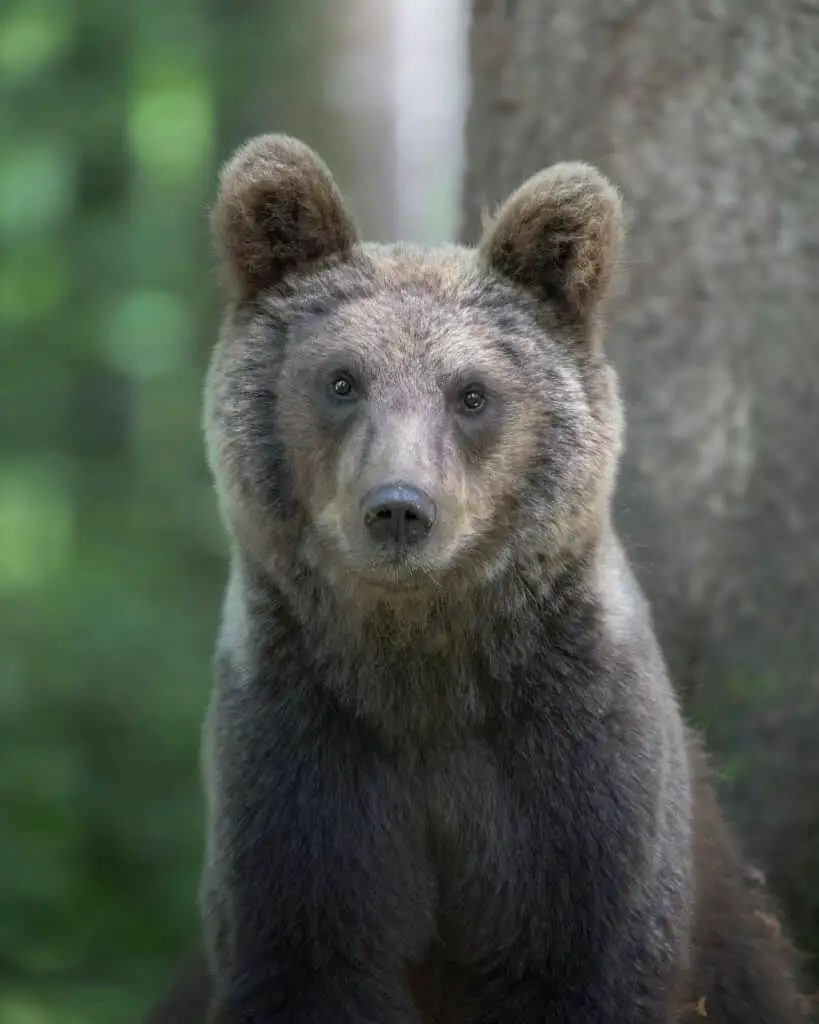
Stories and legends emphasize the respect and reverence these communities have for the bear, which is also often reflected in their arts and ceremonies.
Significance of Kodiak Bear Research
Continued research on Kodiak bears is essential for a deeper understanding of their biology, behaviors, and needs.
Studies on their feeding patterns, population dynamics, and health not only help in their conservation but also provide valuable insights into the overall health of the ecosystem.
How Climate Change Affects Kodiak Bear Behavior
Climate change can impact Kodiak bears’ behavior in significant ways.
For example, warmer temperatures and changes in precipitation can shift the distribution of food resources, causing bears to alter their foraging habits or travel further afield.
Understanding Kodiak Bear Genetic Diversity
Genetic diversity within the Kodiak bear population is relatively low due to their isolation.
This can make the population more susceptible to disease and other genetic risks.
Conservation strategies often include measures to monitor and maintain their genetic health.
Documentary Films and Books on Kodiak Bears
Several documentary films and books explore the lives of Kodiak bears, offering insights into their natural history and the challenges they face.
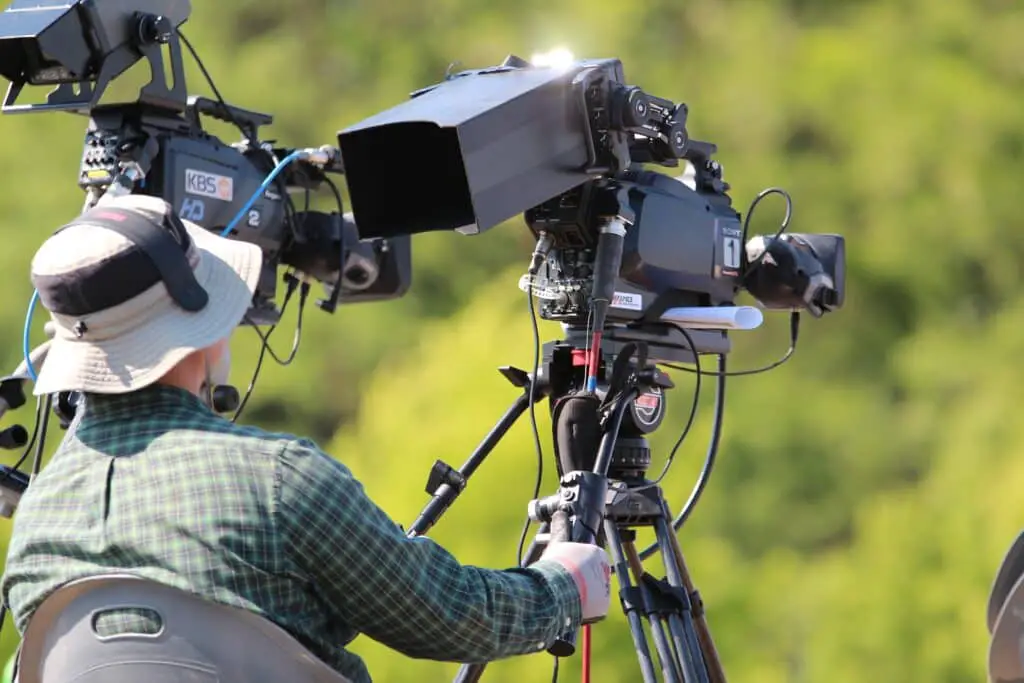
These media can be powerful tools for raising awareness and encouraging conservation efforts.
Best Practices for Safe Bear Viewing on Kodiak Island
For those seeking to view Kodiak bears in their natural habitat, it’s crucial to follow best practices that ensure safety for both observers and bears.
Adhering to guidelines set by wildlife experts can prevent disturbing the bears’ natural behaviors and promote a safe, respectful viewing experience.
Kodiak Bears: Ambassadors of the Wild
Kodiak bears serve as ambassadors of the wild, representing the raw, untamed spirit of the Alaskan wilderness.
Their presence is a powerful reminder of the need for conservation and the delicate balance between humans and nature.
Respect and reverence for these magnificent creatures can ensure their survival for future generations to enjoy and learn from.
Current Research and Studies on Kodiak Bears
Research on Kodiak bears is ongoing, with many studies focusing on aspects such as diet, hibernation patterns, and the impacts of environmental changes.
By supporting and participating in these scientific efforts, we can help preserve the bears’ habitat and ensure their place in the ecosystem.
How You Can Help Preserve Kodiak Bears
The preservation of Kodiak bears is a responsibility that we all share.
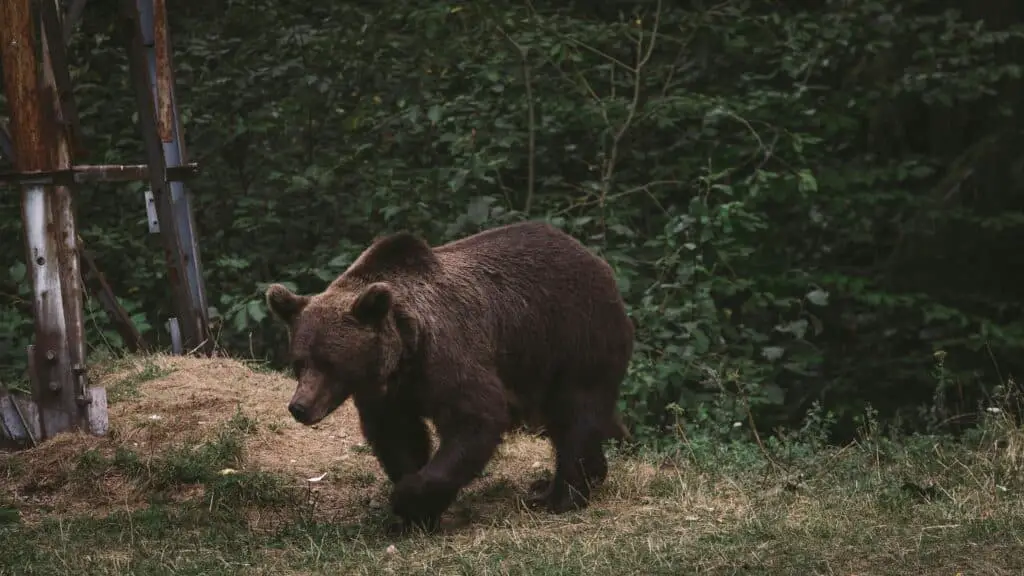
Supporting conservation initiatives, following bear-safe practices, and educating others about these creatures are just a few ways you can contribute to the protection of Kodiak bears.
The Legacy of Kodiak Bears in Natural History
The story of Kodiak bears is deeply woven into the tapestry of natural history.
Their survival and flourishing on the Kodiak Archipelago stand as evidence of a successful coexistence between wildlife and human management practices.
Continuing to prioritize their conservation will ensure that Kodiak bears remain an iconic and beloved part of Alaska’s natural heritage.

